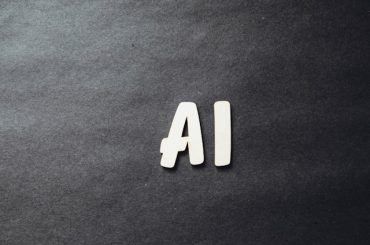Over the last few decades, technology has been at the forefront of competitive advantage in supply chain management. For example, retail and consumer goods companies have invested in supply chain management to automate their operations by implementing solutions such as ERPs, RPA, and in some cases, robotics systems.
However, lack of transparency through the value chain, inefficient and obsolete processes, reactive planning approach, and slow organizational responses have reduced the ability of businesses to face the challenges of the new world.
Traditional supply chain management struggles to respond quickly to significant disruptions – port congestions, same-day delivery, economic swings, and many outlier events. AI is proving to be a blessing for leaders seeking solutions to such challenges, but it is still scratching the surface.
This blog explores the top 5 AI applications in supply chain management and how supply chain leaders can implement them.
1. Unified & integrated demand forecasting through AI
AI has long been used for demand forecasting, but this area still has significant potential for improvement. Traditional supply chain planning processes have proven inadequate in dealing with dynamic shifts in demand. Due to a lack of data sharing and siloed teams, these processes are typically slow, rigid, and reactive.
A better & unified approach for using AI in demand forecasting often follows these three steps:
- Leverage future marketing campaigns, trade promotions, conferences, and macroeconomic data and identify demand at more granular levels – retailers, products, etc.
- Identify if the on-the-ground sales velocity was in line with what was forecasted. Adjust where necessary
- Convert all forecasts to supply plans for retailers.
Recent advances in AI modeling techniques can be used to improve demand forecasting, incorporate real-time information, and consider external events to align demand and supply. AI-powered forecasting can reduce errors in the supply chain by 20%-50%.
Organizations also include integrated demand planning into their S&OP process, thus opting for an AI-powered closed-loop approach designed to optimize processes in real time.
2. Data analytics-based strategic sourcing in the supply chain.
The use of AI and analytics for identifying critical suppliers and strategic partners is often undervalued in the supply chain. Historically, supplier identification was deprioritized due to the daunting and manual processes involved.
Procurement often lacks time to negotiate separately with all suppliers. According to statistics, less than 10% of businesses use advanced procurement tools, while more than 60% still rely on basic MS Office tools for workflow and supplier relationship management.
On the other hand, some organizations are adopting AI algorithms for scanning thousands of suppliers in a fraction of the time and making real-time decisions to help resolve risks popping up across their supply network. NLP algorithms are used to narrow down the list of suppliers based on specific criteria, making it easier to compare and select the best supplier.
Optimization algorithms are being used to select the best vendor based on expected service levels, quality, and potential cost savings. In some cases, chatbots can be used to handle negotiations with vendors, saving several man-hours.
The future of supply chain resilience is to ensure very tight and strong relationships with not just your Tier 1 but even Tier 2 and 3 suppliers, which, in many cases, organizations are not even aware of where these suppliers are located and what operations they are running.
3. Last-mile delivery simplification through AI
Traditional supply chain processes were not designed thinking of concepts like the breadth of demand sources coming through e-commerce channels, same-day delivery of goods, and sometimes even 10 mins delivery.
Lately, as we all have experienced, same-day delivery has become a point of differentiation and thus is becoming increasingly important. Every minute and mile matters. Real-time visibility, optimized packaging, pickup, and route planning are key.
Just route optimization by itself can help businesses save up to 20% in mileage and improve order capacity by 100% without changing the fleet size. AI also empowers businesses with real-time insights about order placement, fulfillment rate, and cancelations.
These insights help make strategic decisions about micro-warehousing, classifying facilities, and workforce management. The fact that the global route optimization software market is expected to reach USD 12.4 Bn by 2030, at a CAGR of 11.56%, shows that more businesses are willing to invest in this technology, and it will change the way the world shops.
4. Predictive Risk Management
Today, the supply chain is more exposed to risks from different channels ranging from government scrutiny to changing consumer preferences and geopolitical uncertainties to cyber-attacks & digital fraud.
Risk management in the supply chain is currently manual, reactive, and prone to many biases. Humans tend to default to solutions that might have worked in the past. This doesn’t work today, especially with the volume and breadth of business, the types of risks, and the scale of their impacts.
Businesses must adopt the following framework using AI to manage various complexities of risks:
- Identify the risks – in advance: Predictive AI models.
- Evaluate the breadth of this risk and the quantum of its impact on the business: Prediction and simulation-based AI agents.
- Mitigate the risks to reduce the impact by pulling the right levers that interact with the affect node: Simulation and Optimization algorithms.
At any point in time, hundreds or even thousands of risks can pop up in the supply chain. Using AI to effectively prioritize and resolve risks directly by establishing integrations with ERP systems is critical.
Predictive risk management can:
- Improve labor efficiency by 10-20% & reduce logistics costs by 3-5%
- Optimize capital efficiency with a 5-15% reduction in inventory and an 8-15% reduction in destroy, donate, or discount
- Increase revenue by up to 1-2% through reduced lost sales
5. Reverse logistics transformation through AI
The days when executives only had to worry about delivering products to customers or clients are long gone. With the exponential growth of e-commerce and emphasis on online presence, companies have been forced to up their game. They offer more flexible return policies, thus bringing everyone’s attention to reverse logistics – the closing loop of supply chains. Product returns, warranty returns, and products at the end of their useful lives are typically the sources of these returns.
Returns are nothing new for most businesses, but lately, their scale has aggravated beyond expectations. Online purchases have a return rate of 15-40%, compared with 5- 10% for in-store purchases.
Furthermore, e-commerce returns are estimated to cost companies 59% of their selling price. As a result, businesses need to build a strategy to deal with these returns.
AI ML and AI technologies are helping companies optimize reverse logistics in several ways, including
- Optimizing returns routes to the warehouse to reduce cost implications while maintaining customer service and validating authentic returns
- Determining the cost of the repair upfront to decide on return and resell vs. destroying
- Forecasting sell-through rates of returned or refurbished products across regions to shortlist the best region or channel and optimal pricing
The adoption rate for the latest technologies in reverse logistics can be much better. We expect it to increase significantly as end-to-end real-time product tracing and predictive technologies gain traction from top executives.
This article has been put together with the efforts from Suryakant Trivedi and Charu Anand.
Shankar Viswanathan has co-authored this article. Shankar is a Principal at a consulting firm and has over 20+ years of experience. Shankar is a leader in the data science team and focuses on enabling advanced analytics capabilities to deliver practical impact for customers powered by diverse data, algorithms, and platforms. Reach out to him on LinkedIn for any discussions on AI and advanced analytics.















